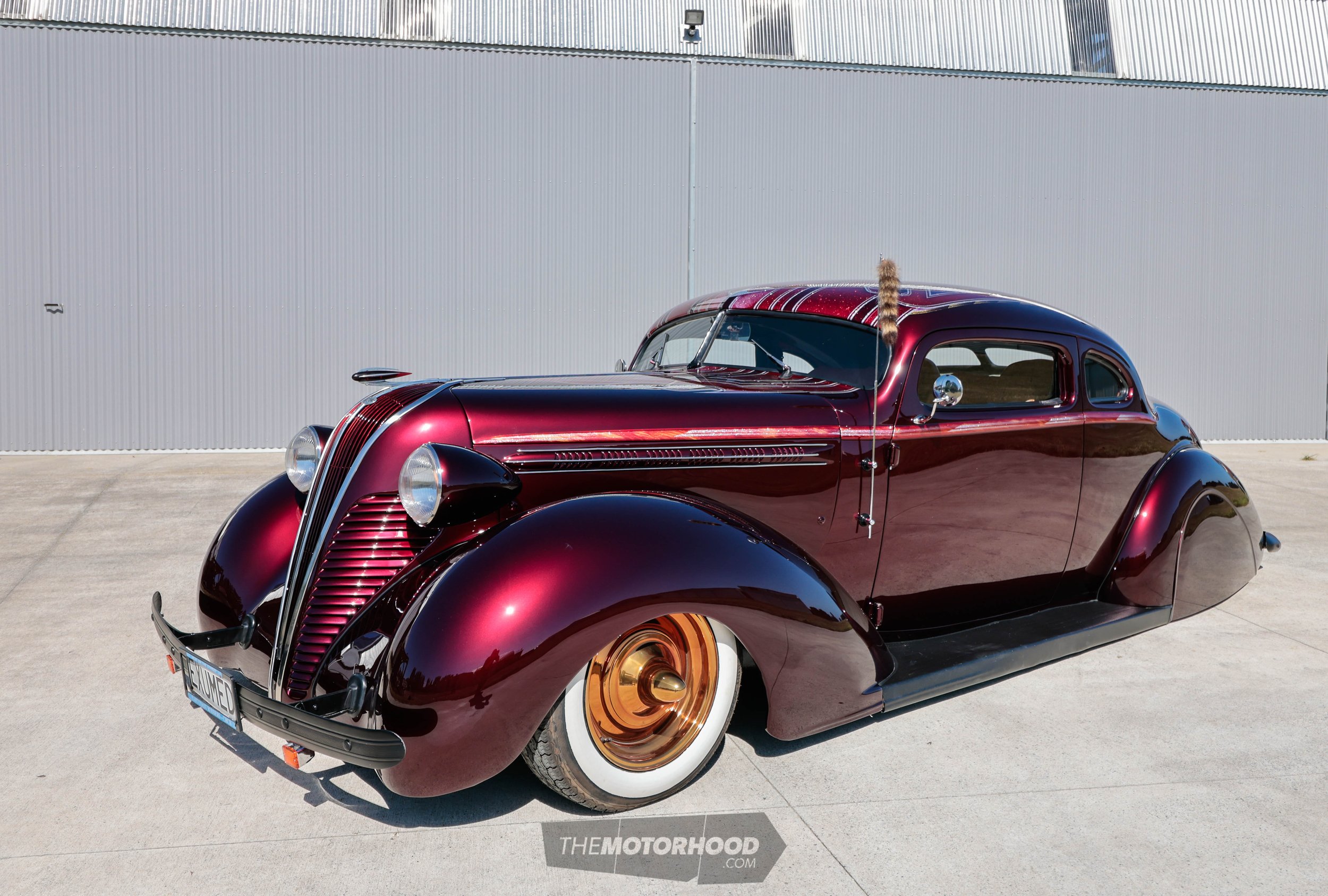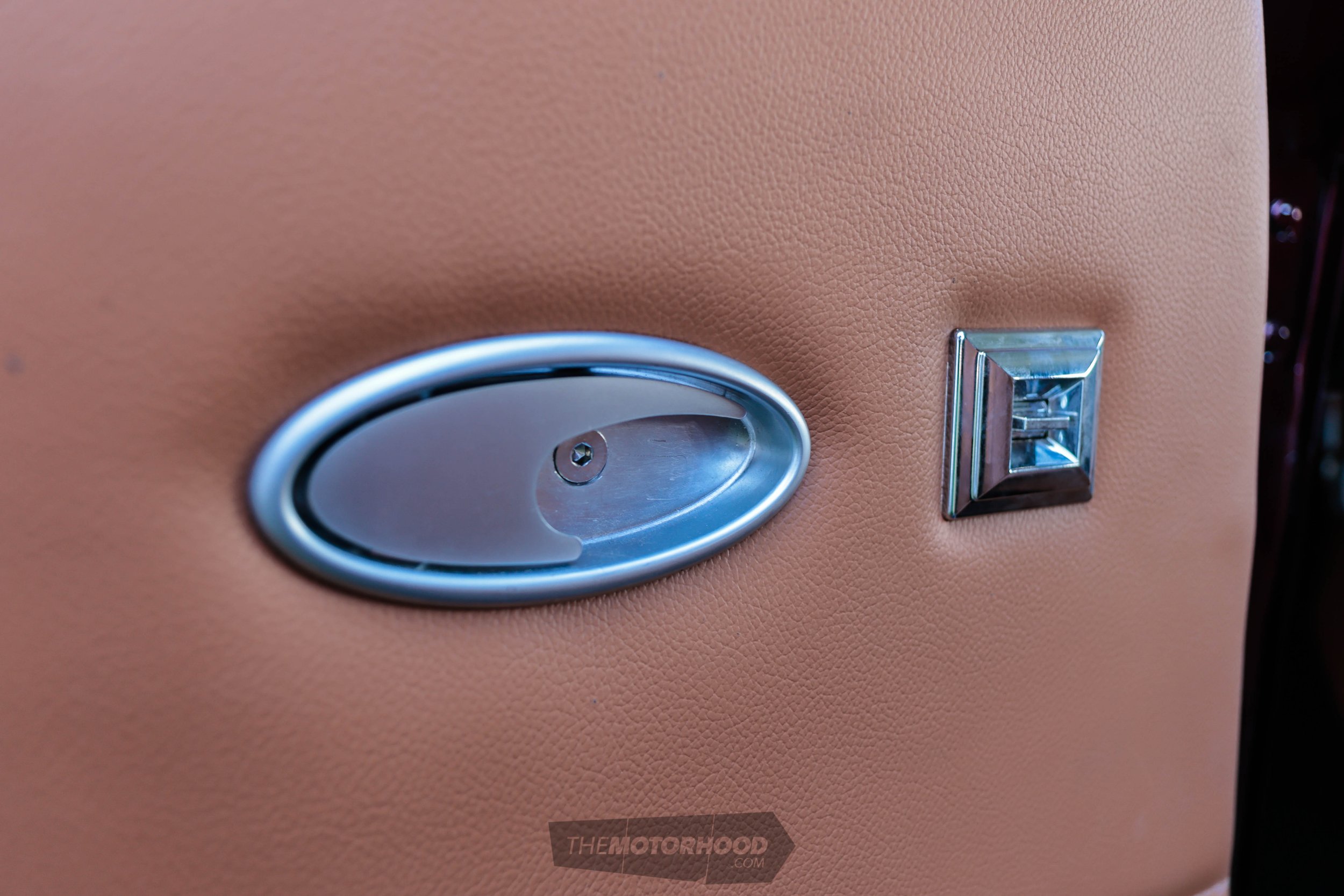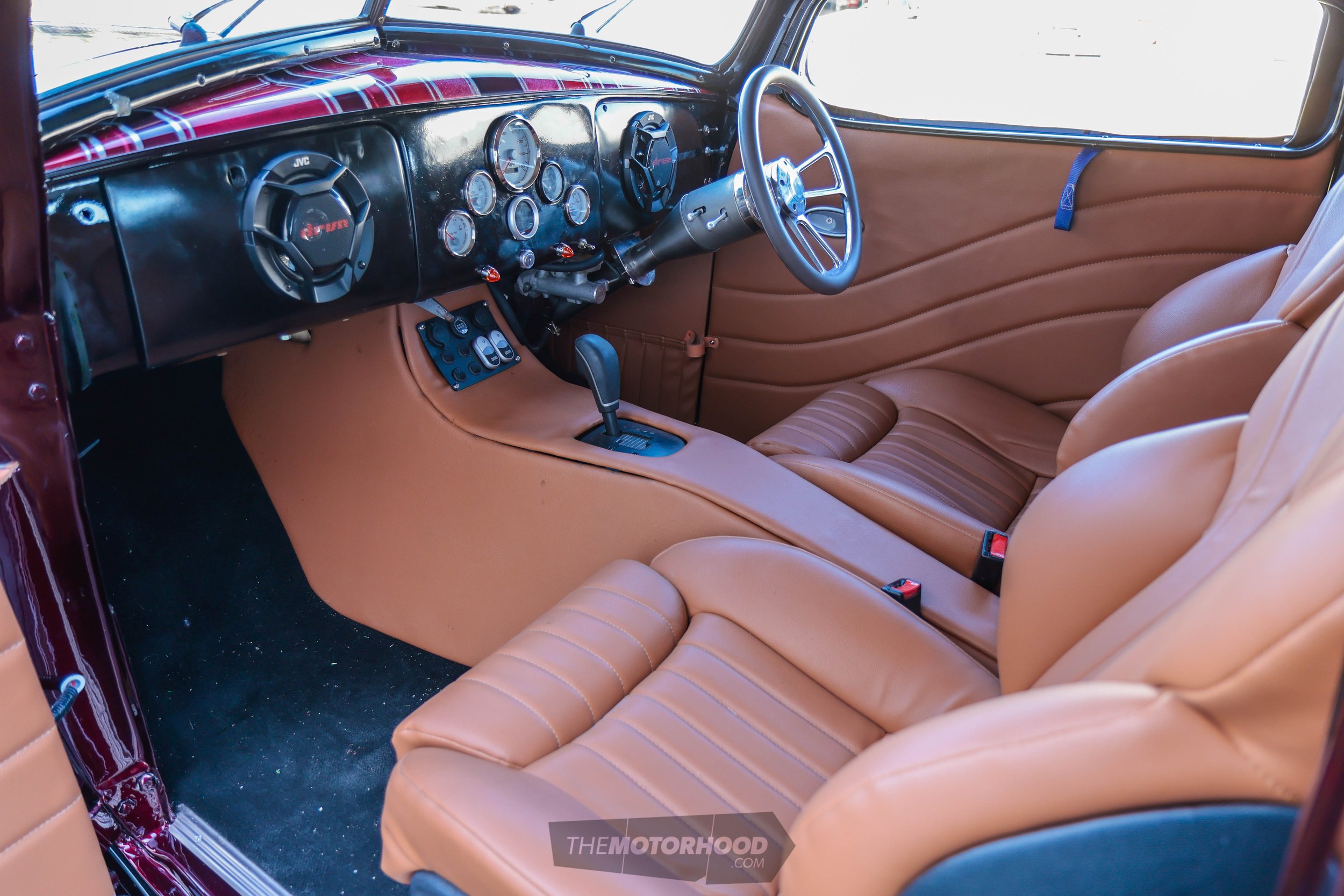A six-year master class in metal manipulation, this Hudson has been exhumed from its dormant life gathering dust in a barn
Words: Marcus Gibson Photos: Rodd Dunn

Having owned and driven hot rods his entire life — none of which would have fallen under the category of show rod — Aaron Grieve decided it was high time he built something a little more refined, or, more to the point, something with gloss paint. What he had in mind was not a show rod, but a custom — a ’30s tail dragger with paint and metal work so spectacular it would be more art work than motor vehicle. Six years later, that’s exactly what he’s produced.
Even at the outset there was a very defined direction for the build and that started with the base vehicle itself. Not content with a run-of-the-mill Ford or Chev coupé of the era — no, sir — Aaron wanted something unique, casting his search net far and wide and eventually snagging a ’37 Hudson Terraplane lying dormant in a Morrinsville barn.
“As soon as I saw it for sale, I knew it would be a one-of-a-kind build. You can’t beat a ’37 Hudson grille,” remarks Aaron. The only real snag with the ’37 was that the front end he loved so much wasn’t complete; it was missing the complete guard assemblies. Had the coupé been run of the mill it would have been an easier job to find replacements, but it wasn’t. Eventually a donor car was located and the build could really get under way.



Right from the outset Rob Duff of Radical Refinishing, the man responsible for the paintwork, was in on the build plan — a plan that included a call to rat rod extraordinaire David Jeffery of BellaRat Customs. David would be tasked with manipulating the ’37 business coupé shape into something a little sexier, as Aaron explains. “The chop was always more about the look than a set amount of inches.”
The end result was around a whopping four inches up front and six inches in the rear. The rear sheet metal was also reshaped to flow better into the boot lid. The coupe was returned to Aaron for the doors and boot to be reskinned, and handles and hinges shaved, while custom fender skirts and running boards were fabricated to complete the exterior’s sleek new lines.
These lines were further enhanced by the ride height — or should we say lack thereof! To get the tail dragging, a 12” C-notch was added to the stock rails, and the factory leaf springs were replaced with a custom parallel four-link and Watts link to keep the Ford nine-inch positively located. Up front a Jag XJS front clip was grafted to the chassis.
All four corners would also receive Slam Specialties airbags, allowing the chassis to lay frame at the flick of a switch. The chassis also received some much-needed strength to the cross member. The body got some trick bracing that you won’t ever see, but it adds support to the flimsy ’30s structure.




Such drastic chassis work in a coupé of this era usually means the loss of a rear seat, but that was a no-go for Aaron. “I wanted to be able to enjoy it with my family, so it was a must that it had four seats — unlike most of these coupés.”
While that requirement added a bit of complexity to the job, it was achieved — and not just with some apologetic foam swab masquerading as a seat pad. No, sir, there are actually four bucket seats for the Grieve clan to relax in while cruising. Even up front, fitting the two seats is an impressive feat given the size of the trans tunnel required to fit the 6L80E at this chassis height. In fact, the entire firewall and tunnel were replaced and an all-new rear floor created to accommodate what lies beneath. However, they did manage to keep the boot space — so practical for those longer cross-country road trips.
When it came to a power plant, all-out performance was never the goal — this is built to cruise, so a stock form L77 was sourced from a donor VF Commodore and received only basic modifications to help it breathe better, along with a remapped factory ECU. Bolted to the GM block is a modified Sanden AC pump, which provides for the air ride suspension — chosen over the more conventional electric pumps. With a bump in power over the factory six, the radiator was not going to cut it, so it was modified with a new core and fitted with a 16” fan, while a pair of 10” fans draw the hot air from the bay.



Once all the fabrication was complete it was Rob’s time to shine. It would be his gun work that would end up stealing the show. First up was the custom mix of HOK Brandywine and Candy Apple red, which covers the entire body, then a ridiculous number of hours were poured into the pinstriping and lacing of the bonnet, roof, and tail section, with even the dash copping the treatment, which cleverly flows from the design on the bonnet.
It’s an intricate design — one that has also been flaked and then flow coated with litres and litres of clear, before being colour sanded, polished, and ceramic coated. The entire process took a serious amount of time, but the result is nothing short of breathtaking. Aaron said he wanted a gloss car; he’s most certainly got that and then some.
Building something custom like this can be a real headache; the amount of work required when you undertake such drastic body modifications would be mind-blowing to most — from custom glass to interior trim. Not to mention ensuring everything is done to the letter of the law. But for Aaron, it’s all part of the journey.
“I really enjoyed all aspects of the build, including all the fiddly bits, and even the frustrating bits I had to redo multiple times, as it was a learning experience.”
Aaron is most proud of the fact that the Terraplane was built, not by the big-name pro shops but by a bunch of talented guys who all more or less work from their home garages. It just goes to show what can be achieved from the home workshop with a solid plan and some talented mates. All told, it was a six-year labour of love, and all that’s left to do now is revel in it and clock up some kms — enjoy it, Aaron.



This article originally appeared in NZV8 issue No. 202




